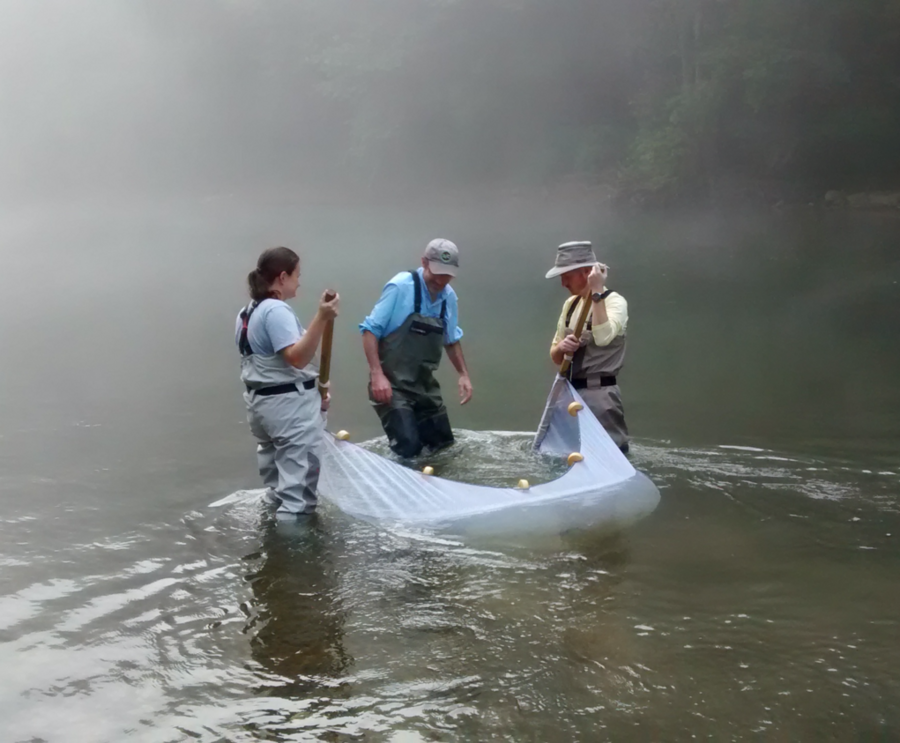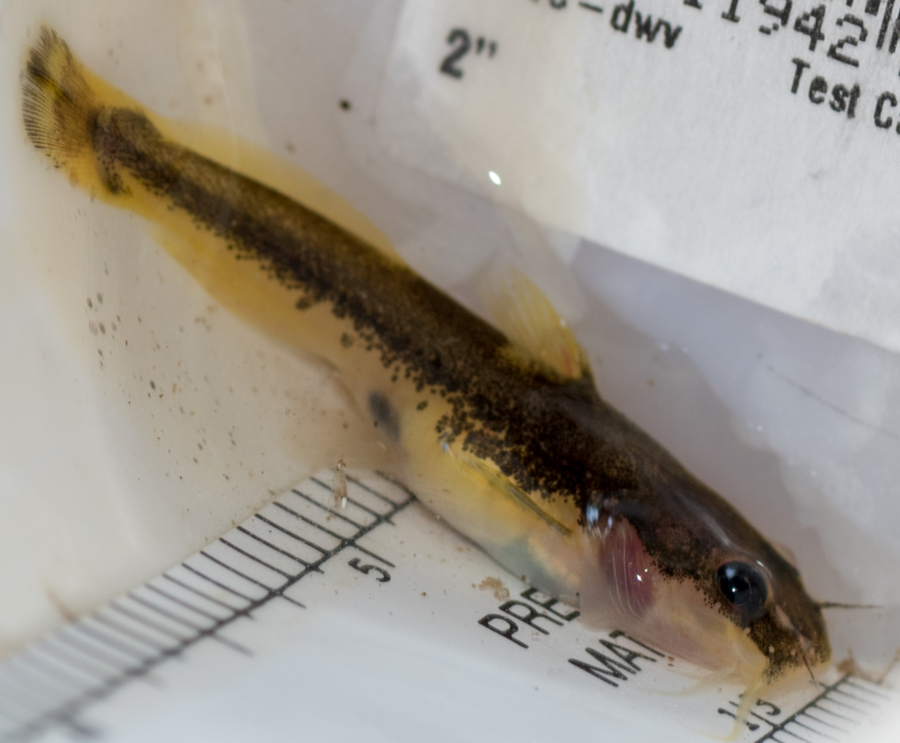Samantha Allen and Hayden Mattingly

Graduates and faculty of Tennessee Tech University’s School of Environmental Studies
are helping to find and protect an endangered species of catfish that has only been
found in Tennessee. Samantha Allen, Ph.D., lecturer and research associate in the
School of Environmental Studies; and Hayden Mattingly, Ph.D., director of the School
of Environmental Studies; teamed up with Grady Wells, Ph.D, a graduate of Tech who
now works at The University of the South, to help Wells study the pygmy madtom.
“I joined the pygmy madtom project as a master’s student,” Allen said. “I had experience
with geographic information systems (GIS) and spatial analysis, and I was able to
apply these techniques to collaborate with the work that Dr. Hayden Mattingly and
Dr. Grady Wells were doing for Grady’s doctoral studies. The goal was to aid in their
work to predict which other stream locations this endangered and hard-to-find fish
may be found.”
Before the study, this rare fish had only been found in a small section of the Upper
Clinch River and in a larger section of the lower middle Duck River in Tennessee.
Their small size – about the size of a pen cap – and their tendency to bury themselves
under gravel during the day has made finding these endangered catfish difficult.
Hoping to be able to find more hidden pockets of the fish, Allen, Mattingly and Wells
collected data on the pygmy madtom’s current favorite places to reside. Armed with
data on the environment of the current habitat – such as canopy cover, drainage area,
flow rate and slope – they worked with GIS mapping software MaxEnt to predict other
likely spots the pygmy madtom might be hiding.

“We found that, according to the model, there were some locations north of the Tennessee-
Virginia line that were outside of the known distribution of the pygmy madtom, but
have high habitat suitability and could be great starting points for future field
sampling efforts,” Allen said.
Their findings have been published in the peer-reviewed scientific journal, “Journal
of Fish and Wildlife Management,” and will not only serve as a starting point for
finding other hidden pockets of pygmy madtoms, but also provide an example for other
scientists to replicate when looking for other hard-to-find species.
“I hope this will provide a framework for other researchers looking for methods to
improve field sampling prioritizations and increase efficiency in these large rivers
where sampling large stretches can be difficult,” Allen said. “I was able to take
techniques used in this project and use them for my own doctoral studies as well as
teach them to other students who are looking to apply MaxEnt modeling, remote sensing
or GIS to their research projects.”
“Tennessee Tech University appealed to me for its extensive opportunities with research
and experiential learning while also having a great community to be involved in,”
she added. “As an early career scientist, the collaboration between myself and Drs.
Mattingly and Wells was invaluable for jumpstarting my use of spatial analysis and
species distribution models for species and environmental management.”
For more information on the research, read the article in the “Journal of Fish and Wildlife Management.”

